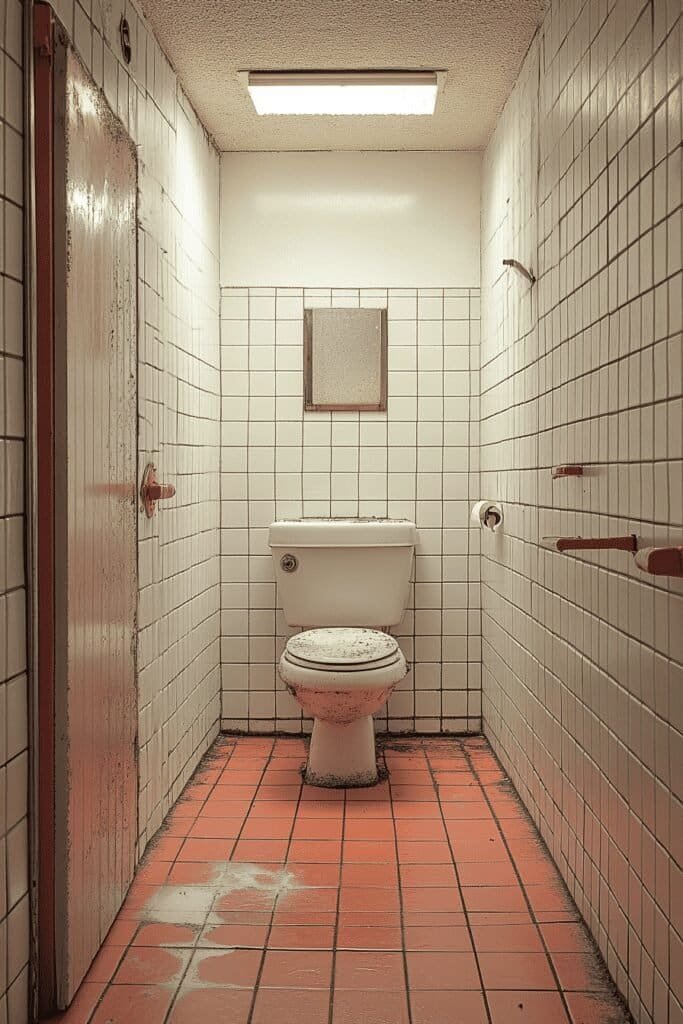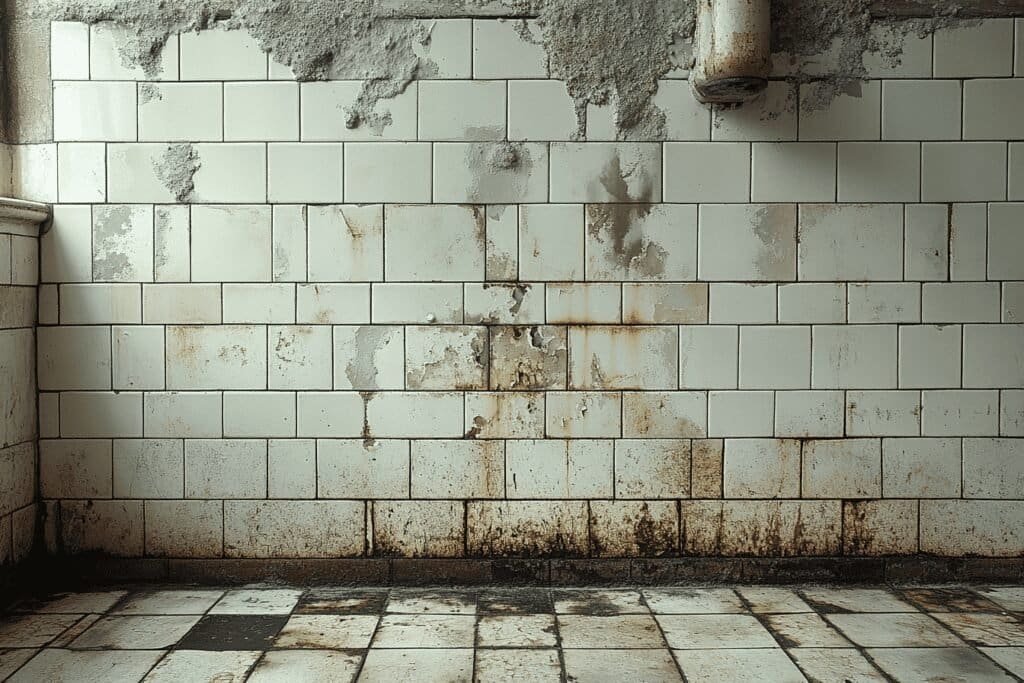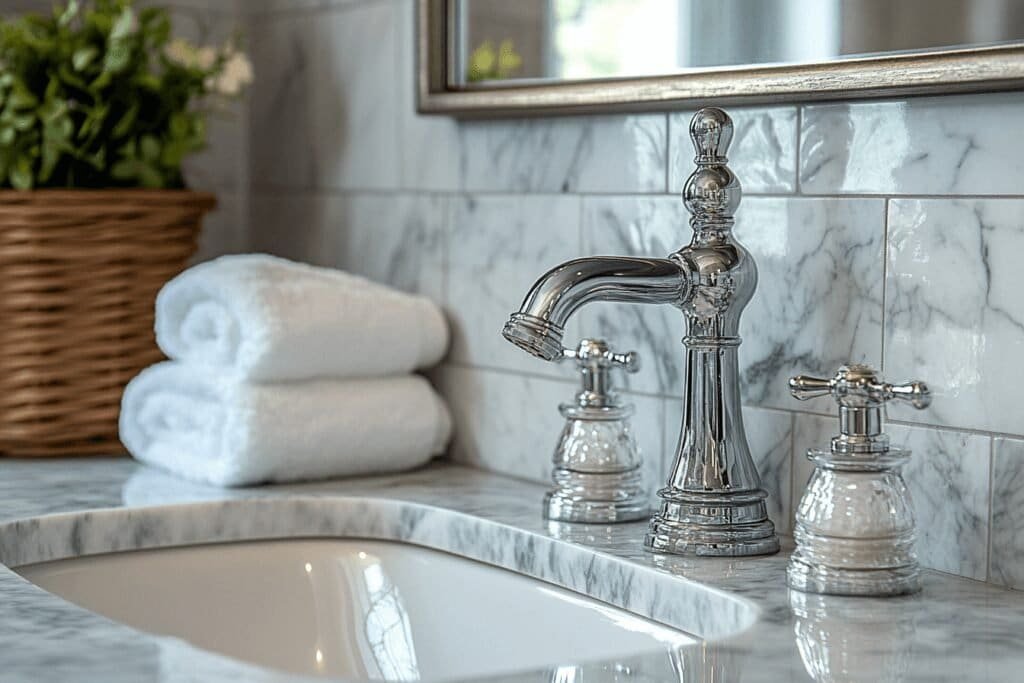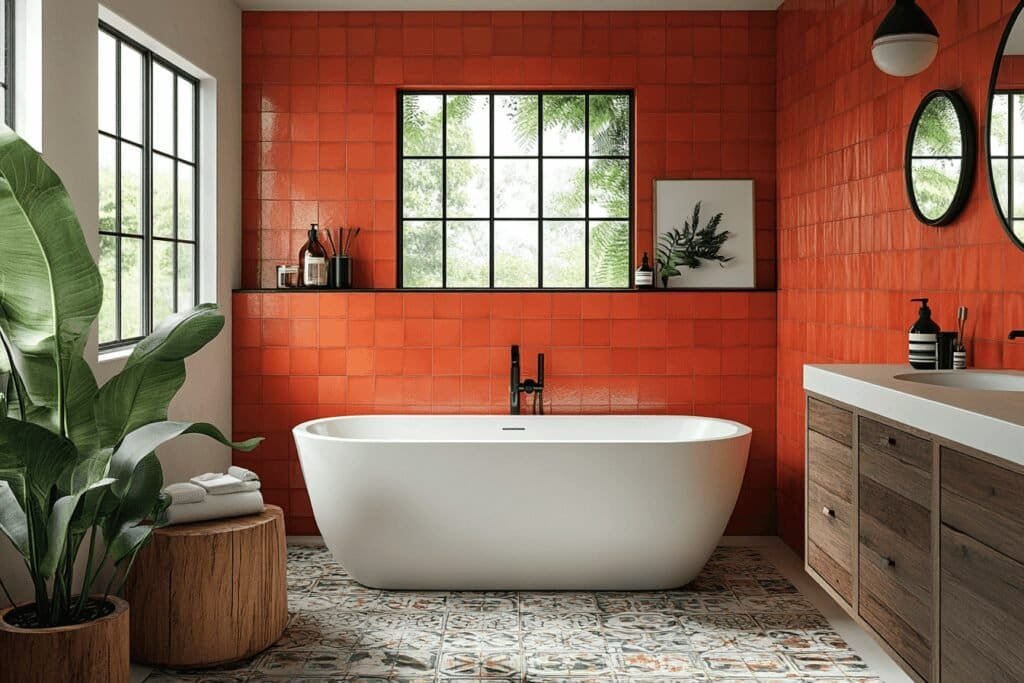Mold in the bathroom is a frequent and sometimes dangerous issue. The warm, moist environment creates the perfect breeding ground for various types of mold, and it’s crucial to understand what you’re dealing with. Whether you’re tackling minor mold problems or planning a bathroom remodel, knowing how to identify and manage different bathroom mold types can help keep your space safe and clean.
In this article, we’ll break down the most common types of mold found in bathrooms, the potential health risks they pose, and what you can do to prevent and eliminate them.
Why Does Mold Grow in Bathrooms?
Bathrooms are naturally humid environments. Every time you shower, water vapor rises and collects on surfaces like tiles, walls, ceilings, and even in the air itself. When the water doesn’t dry out properly, mold spores—which are always present in the air—find the moisture and begin to grow.
Add to that the presence of organic material like soap scum, oils from the body, or fabric (like shower curtains and bath mats), and you have the perfect recipe for mold growth. Knowing this, it’s no surprise that mold is common in bathrooms, but certain types are more harmful than others.
The Most Common Bathroom Mold Types
1. Aspergillus
Aspergillus is one of the most common molds you’ll find in indoor spaces, including bathrooms. It typically grows around water-damaged areas, like shower walls or around leaky pipes. In bathrooms, you’ll see it as black, gray, or even white and yellow patches with a fuzzy texture.
- Health Risks: While aspergillus can be harmless to some, it can cause severe respiratory reactions in people with asthma or mold allergies. In rare cases, a strain called aspergillus niger can infect lung tissue, causing the potentially serious disease known as aspergillosis.
- Prevention Tips: Regularly dry out the bathroom and fix any leaks to avoid water accumulation. Regular cleaning with mold-inhibiting products can help keep aspergillus at bay.
2. Cladosporium
Cladosporium is another mold commonly found in bathrooms. It thrives in damp areas, such as under sinks, around tubs, or in window frames. This mold has an olive green, brown, or black appearance, and it tends to grow in circular patches.
- Health Risks: Cladosporium can aggravate asthma symptoms and trigger allergies, causing sneezing, coughing, and watery eyes. In pets, it can lead to dangerous infections affecting the central nervous system.
- Prevention Tips: Keep bathroom fabrics like towels, bath mats, and shower curtains dry. Clean these regularly to prevent mold buildup. Use a bathroom fan or open windows during and after showers to reduce humidity.
3. Penicillium
Penicillium, known for its role in producing antibiotics, can also be a nuisance when it grows in your bathroom. It’s often found on water-damaged surfaces like window frames, drywall, and even faucets.
- Appearance: Bluish-green in color with a fuzzy texture.
- Health Risks: Penicillium can cause allergic reactions, respiratory issues, and in rare cases, infections in immunocompromised individuals. It can also damage surfaces, leaving stains even after the mold is removed.
- Prevention Tips: Regularly inspect bathroom surfaces for signs of water damage. Promptly address any moisture issues or leaks that can encourage mold growth.
4. Stachybotrys (Black Mold)
Stachybotrys, often referred to as “black mold,” is the most infamous type of mold due to its health risks. It requires a constant source of moisture to grow and thrives in areas with persistent leaks, poorly ventilated spaces, or significant water damage.
- Appearance: It’s black with a slimy texture and often has a strong, musty odor.
- Health Risks: Exposure to black mold can lead to serious health problems such as chronic respiratory issues, headaches, fatigue, and even depression. It is particularly dangerous for people with asthma, allergies, or compromised immune systems.
- Prevention Tips: Ensure your bathroom is well-ventilated, and regularly inspect for any hidden leaks, particularly inside walls or under flooring. If you’re tackling a bathroom remodel, invest in moisture-resistant materials and professional mold remediation if necessary.
5. Trichoderma
Trichoderma is a fast-growing mold that commonly appears in humid bathrooms, often near plumbing leaks or in areas with constant moisture, such as around showers and sinks.
- Appearance: It starts off transparent but turns yellow or white before eventually becoming gray or green. Some species may have a faint coconut smell.
- Health Risks: It generally affects those with asthma or allergies, causing symptoms like sneezing, coughing, and sore throats. Trichoderma is known for being resistant to antifungal treatments, making it harder to eliminate.
- Prevention Tips: Regular cleaning and ensuring there are no leaks in your bathroom are key to preventing trichoderma growth. Use dehumidifiers if needed in particularly humid climates.
6. Alternaria
Alternaria is one of the most common molds found in households and often thrives in damp areas like bathroom sinks and showers. It’s typically dark green or brown with a velvety texture.
- Health Risks: Alternaria can cause allergic reactions, especially in those with asthma or respiratory issues. It can also infect human tissue in rare cases, leading to more serious health problems.
- Prevention Tips: Ensure that all bathroom surfaces, especially in the shower and around sinks, are regularly wiped down and kept dry. Alternaria thrives on wet surfaces, so reducing moisture is essential.
7. Aureobasidium
Aureobasidium is commonly found on grout, caulking, and shower curtains. It’s slimy and usually appears pink or orange when young but turns black as it matures.
- Health Risks: Although it’s less harmful in its early stages, mature colonies can release spores that trigger asthma and allergies. In pets, aureobasidium can cause serious illness if ingested or after prolonged exposure.
- Prevention Tips: Keep caulking clean and dry, and regularly wash or replace shower curtains to avoid mold buildup. Ensure the bathroom has proper airflow to reduce moisture on surfaces.


How to Prevent Bathroom Mold
Preventing mold in your bathroom is crucial, as it’s much easier to avoid mold growth than to remove it once it appears. Here are some tips to keep mold at bay:
1. Control Humidity
Since mold thrives in high humidity, controlling moisture levels in your bathroom is essential. Use a bathroom fan or dehumidifier to remove excess moisture from the air, especially after showers. Open windows or leave the door open to allow fresh air to circulate.
2. Regular Cleaning
Clean your bathroom regularly with mold-inhibiting products. Pay particular attention to areas prone to moisture, such as grout, tiles, sinks, and shower walls. For deep cleaning, a solution of vinegar and water can help prevent mold from taking hold.
3. Fix Leaks Promptly
Mold often grows in areas with hidden water leaks, so fixing plumbing issues quickly is key. During a bathroom remodel, consider installing moisture-resistant materials like waterproof drywall and mold-resistant paints to minimize the risk of mold growth.
4. Keep Surfaces Dry
Use a squeegee to remove water from shower walls and glass doors after each use. Dry off surfaces like sinks and countertops to prevent water from sitting for too long.
How to Remove Mold from Your Bathroom
If you spot mold in your bathroom, it’s important to remove it quickly. Here’s how you can tackle small mold problems:
- Vinegar and Baking Soda Solution: Mix a solution of equal parts vinegar and water, or use a paste of baking soda and water to scrub away mold on tiles and grout. Let the solution sit for 10-15 minutes, then scrub with a brush.
- Hydrogen Peroxide: For tougher mold, hydrogen peroxide is effective at killing mold spores. Spray directly on the mold, let it sit for 10 minutes, then wipe clean.
For larger areas of mold or if you’re concerned about black mold, it’s best to hire a professional mold remediation service to ensure the mold is completely eliminated.
Conclusion
Understanding the different types of bathroom mold is crucial for maintaining a safe and healthy space. While some types of mold can be harmless in small amounts, others can pose significant health risks, especially to those with asthma, allergies, or weakened immune systems. Whether you’re cleaning up after spotting mold or planning a bathroom remodel to eliminate moisture issues, being proactive about mold prevention is essential.
By following proper cleaning techniques, controlling humidity, and addressing leaks quickly, you can reduce the likelihood of mold developing and keep your bathroom fresh, clean, and mold-free.
Disclaimer: As an Amazon Associate, I earn from qualifying purchases. This means that if you click on certain links on this site and make a purchase, I may receive a small commission at no additional cost to you.


